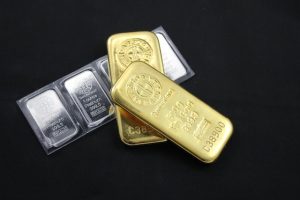 The United States has a long and complex history with gold and silver, both of which have played important roles in the development and evolution of the U.S. economy. In this blog post, we will explore the historical significance of gold and silver in the U.S. dollar, and how this relationship has changed over time.
The United States has a long and complex history with gold and silver, both of which have played important roles in the development and evolution of the U.S. economy. In this blog post, we will explore the historical significance of gold and silver in the U.S. dollar, and how this relationship has changed over time.
In the early days of the United States, gold and silver were used as currency in the form of coins. The Coinage Act of 1792 established the U.S. Mint and created a standard system for coinage, with gold coins valued at $10, $5, and $2.50, and silver coins valued at $1, 50 cents, 25 cents, 10 cents, and 5 cents. At the time, these coins were backed by gold and silver, meaning that the value of the coin was equivalent to the value of the metal contained within it.
This system remained in place for many years but was eventually replaced by a new system in which paper currency became the primary form of money. The Federal Reserve Act of 1913 created the Federal Reserve System, which established a central banking system in the United States and gave the government greater control over the money supply. Under this system, the U.S. dollar became the primary form of currency, and gold and silver were no longer directly tied to the value of the currency.
However, the relationship between gold and silver and the U.S. dollar continued to play an important role in the economy. In the early 20th century, the U.S. dollar was pegged to gold at a fixed rate of $35 per ounce, which meant that the value of the U.S. dollar was tied to the value of gold. This system, known as the gold standard, remained in place until 1971 when President Richard Nixon ended the convertibility of the U.S. dollar into gold.
Since then, gold and silver have continued to be important commodities in the global market, and their value has fluctuated in response to a range of economic and political factors. Today, investors and traders can buy and sell gold and silver in a variety of forms, including coins, bars, and exchange-traded funds (ETFs).
Despite the changes that have occurred over time, the historical significance of gold and silver in the U.S. dollar cannot be overstated. These precious metals have played a critical role in the development and evolution of the U.S. economy, and continue to be an important factor in the global financial system. As such, they remain a valuable asset for investors and traders who are looking to diversify their portfolios and protect their wealth in uncertain times.
Unlike gold, which is primarily used for jewelry and investment purposes, silver has a wide range of industrial uses. It is used in electronics, solar panels, medical equipment, and many other applications. As a result, the demand for silver is driven not only by investors but also by manufacturers and other industries. This means that silver prices can be influenced by a variety of factors, making it a potentially lucrative investment option.
